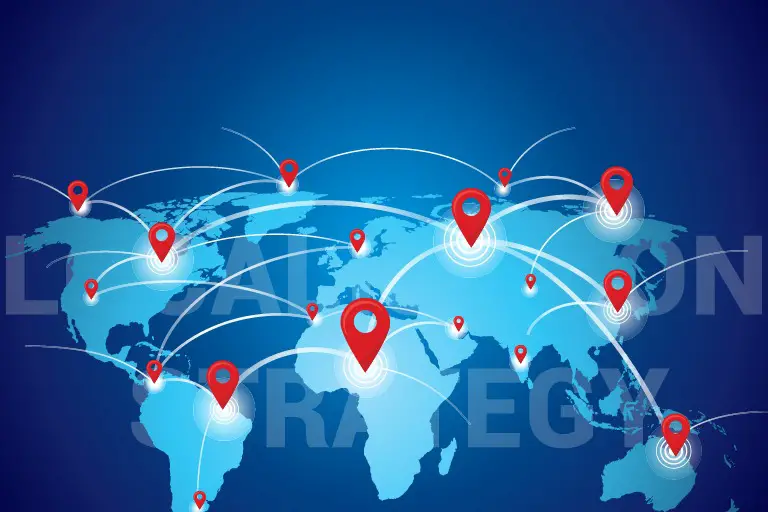
In the fast-paced landscape of global business, the localization industry is experiencing transformative shifts, driven by technological advancements, changing consumer behaviors, and evolving business strategies. As companies seek to connect with diverse audiences worldwide, the localization landscape is adapting to meet the demands of a globalized digital era. In this blog post, we’ll explore the key localization trends that are reshaping the industry, providing insights into the innovations, challenges, and opportunities that lie ahead.
**1. The Rise of Artificial Intelligence and Machine Translation
Trend Overview: Artificial Intelligence (AI) and Machine Translation (MT) are revolutionizing the localization process, offering efficiency and scale that was once unimaginable. AI-driven technologies, such as neural machine translation, are enhancing the speed and accuracy of language translation, reducing turnaround times and costs.
Impact on the Industry:
- Increased Efficiency: AI-powered tools automate repetitive tasks, allowing localization professionals to focus on more strategic and creative aspects of their work.
- Improved Translation Quality: Machine Translation engines are evolving rapidly, providing more nuanced and context-aware translations, though human oversight remains crucial for nuanced and culturally sensitive content.
Challenges and Considerations:
- Cultural Nuances: While AI excels at linguistic accuracy, understanding cultural nuances remains a challenge. Human involvement is essential for ensuring that translations are culturally appropriate and resonate with diverse audiences.
**2. Hyper-Personalization in Content Localization
Trend Overview: Personalization is no longer confined to marketing strategies; it has permeated the localization landscape. Companies are leveraging data analytics and user behavior insights to tailor content to the preferences, behaviors, and cultural expectations of individual users.
Impact on the Industry:
- Enhanced User Engagement: Hyper-personalization leads to more relevant and engaging content, fostering stronger connections with users.
- Increased Conversion Rates: Personalized content, ranging from website interfaces to marketing materials, has been shown to increase conversion rates by providing a more tailored and satisfying user experience.
Challenges and Considerations:
- Data Privacy: As personalization relies on user data, companies must navigate the complexities of data privacy regulations and ensure that user information is handled ethically and securely.
**3. Audio-Visual Localization for Multimedia Content

Trend Overview: The demand for audio-visual content localization, including subtitles and dubbing, has surged with the rise of streaming platforms, podcasts, and online video content. Companies are investing in high-quality localization to reach wider audiences and enhance the accessibility of multimedia content.
Impact on the Industry:
- Global Reach: Localization of audio-visual content allows companies to reach audiences across linguistic and cultural barriers, expanding their global footprint.
- Accessibility: Subtitles and dubbing not only cater to non-native speakers but also make content more accessible to individuals with hearing impairments.
Challenges and Considerations:
- Cultural Sensitivity: Adapting audio-visual content requires careful consideration of cultural nuances to avoid misinterpretations or offensive representations.
**4. Localization for E-Commerce Platforms
Trend Overview: E-commerce is experiencing exponential growth, and as businesses go global, the importance of effective localization for e-commerce platforms has risen. From translated product descriptions to localized payment options, companies are customizing the online shopping experience for diverse markets.
Impact on the Industry:
- Increased Conversions: E-commerce localization contributes to higher conversion rates by providing users with a seamless and culturally relevant shopping experience.
- Building Trust: Trust is crucial in online transactions. Localized content, including pricing, shipping information, and customer support, builds trust with users.
Challenges and Considerations:
- Regulatory Compliance: E-commerce localization must align with regional regulations, including data protection laws and consumer rights, to ensure legal compliance.
**5. Blockchain Technology for Translation Management
Trend Overview: Blockchain technology is making inroads into the localization industry, offering secure and transparent solutions for translation management. Decentralized platforms powered by blockchain enhance the integrity of translation processes, ensuring traceability and preventing unauthorized modifications.
Impact on the Industry:
- Enhanced Security: Blockchain provides a tamper-proof and transparent record of translation activities, reducing the risk of unauthorized alterations.
- Streamlined Collaboration: Decentralized platforms enable secure collaboration among translators, linguists, and stakeholders, improving workflow efficiency.
Challenges and Considerations:
- Integration Complexity: Implementing blockchain solutions requires careful integration with existing systems and may pose challenges in terms of user adoption and training.
**6. Crowdsourcing and Community Involvement in Localization
Trend Overview: Companies are increasingly turning to crowdsourcing and community involvement to enhance the quality and authenticity of their localized content. Engaging local communities in the localization process ensures cultural relevance and a nuanced understanding of regional preferences.
Impact on the Industry:
- Cultural Authenticity: Community involvement contributes to cultural authenticity, ensuring that localized content resonates with the lived experiences and nuances of local audiences.
- Scalability: Crowdsourcing allows companies to scale localization efforts efficiently, tapping into a diverse pool of linguistic and cultural expertise.
Challenges and Considerations:
- Quality Control: Maintaining quality standards can be challenging in crowdsourced localization. Clear guidelines and oversight are essential to ensure accuracy and consistency.
**7. Integration of Augmented Reality (AR) in Localization
Trend Overview: Augmented Reality (AR) is becoming a powerful tool in localization, especially for industries like tourism, education, and retail. AR applications offer real-time language translation, cultural information, and interactive experiences tailored to specific locations.
Impact on the Industry:
- Enhanced User Experience: AR localization provides users with immersive and location-specific content, enhancing their overall experience.
- Innovative Marketing: Retailers and tourism industries leverage AR to offer interactive and engaging experiences, from virtual product try-ons to location-based cultural insights.
Challenges and Considerations:
- Technology Accessibility: AR applications require compatible devices, and ensuring accessibility across a diverse range of platforms can be a challenge.
**8. Compliance with Accessibility Standards
Trend Overview: As inclusivity gains prominence, companies are placing greater emphasis on ensuring that their digital content is accessible to users with diverse abilities. This includes compliance with accessibility standards for web content, mobile applications, and other digital platforms.
Impact on the Industry:
- Wider Audience Reach: Accessibility standards ensure that digital content can be accessed by individuals with various disabilities, expanding the audience reach.
- Legal Compliance: Adhering to accessibility standards is not only a moral imperative but also a legal requirement in many regions.
Challenges and Considerations:
- Technological Implementation: Ensuring accessibility may require technical adjustments and ongoing testing to meet evolving standards.
**9. Rise of Niche and Regional Localization Providers
Trend Overview: While larger localization agencies continue to dominate the industry, there is a growing trend towards niche and regional localization providers. These specialized providers offer in-depth knowledge of specific markets, languages, and industries.
Impact on the Industry:
- Specialized Expertise: Niche providers bring specialized expertise in specific domains or regions, offering a deep understanding of local nuances and preferences.
- Agility and Flexibility: Smaller providers may offer greater agility and flexibility, catering to the unique needs of clients with a more personalized approach.
Challenges and Considerations:

- Scalability: Niche providers may face challenges in scaling operations to meet the demands of large-scale localization projects.
**10. Continuous Localization and Agile Workflows
Trend Overview: The traditional model of batch localization is giving way to continuous localization, where content is updated and translated in real-time. Agile workflows are becoming more prevalent, allowing companies to adapt quickly to market changes and user feedback.
Impact on the Industry:
- Real-Time Updates: Continuous localization ensures that content is always up-to-date, reflecting changes in products, services, or market conditions in real-time.
- Agile Adaptation: Agile workflows enable localization teams to respond swiftly to user feedback and market trends, fostering a more responsive and user-centric approach.
Challenges and Considerations:
- Coordination and Collaboration: Real-time updates require seamless coordination among teams, tools, and stakeholders to avoid disruptions and maintain quality.
Conclusion: Navigating the Future of Localization
The localization industry is undergoing a profound transformation, driven by technological innovations, changing consumer expectations, and the imperative for businesses to connect with global audiences. As companies navigate the future of localization, the key lies in embracing these trends strategically, leveraging technology, collaborating with diverse communities, and maintaining a user-centric approach.
From the integration of AI and blockchain to the rise of niche providers and the emphasis on accessibility, the localization landscape is evolving at a rapid pace. Success in this dynamic environment requires a forward-thinking mindset, a commitment to cultural authenticity, and a continuous willingness to adapt to the ever-changing demands of the globalized digital era.
By staying abreast of these localization trends and proactively integrating them into their strategies, businesses can position themselves not only to meet the challenges of the present but also to thrive in the dynamic and interconnected future of global communication and commerce.

 Afrikaans
Afrikaans Albanian
Albanian Amharic
Amharic Arabic
Arabic Armenian
Armenian Azerbaijani
Azerbaijani Basque
Basque Belarusian
Belarusian Bengali
Bengali Bosnian
Bosnian Bulgarian
Bulgarian Catalan
Catalan Cebuano
Cebuano Chichewa
Chichewa Chinese (Simplified)
Chinese (Simplified) Chinese (Traditional)
Chinese (Traditional) Corsican
Corsican Croatian
Croatian Czech
Czech Danish
Danish Dutch
Dutch English
English Esperanto
Esperanto Estonian
Estonian Filipino
Filipino Finnish
Finnish French
French Frisian
Frisian Galician
Galician Georgian
Georgian German
German Greek
Greek Gujarati
Gujarati Haitian Creole
Haitian Creole Hausa
Hausa Hawaiian
Hawaiian Hebrew
Hebrew Hindi
Hindi Hmong
Hmong Hungarian
Hungarian Icelandic
Icelandic Igbo
Igbo Indonesian
Indonesian Irish
Irish Italian
Italian Japanese
Japanese Javanese
Javanese Kannada
Kannada Kazakh
Kazakh Khmer
Khmer Korean
Korean Kurdish (Kurmanji)
Kurdish (Kurmanji) Kyrgyz
Kyrgyz Lao
Lao Latin
Latin Latvian
Latvian Lithuanian
Lithuanian Luxembourgish
Luxembourgish Macedonian
Macedonian Malagasy
Malagasy Malay
Malay Malayalam
Malayalam Maltese
Maltese Maori
Maori Marathi
Marathi Mongolian
Mongolian Myanmar (Burmese)
Myanmar (Burmese) Nepali
Nepali Norwegian
Norwegian Pashto
Pashto Persian
Persian Portuguese
Portuguese Punjabi
Punjabi Romanian
Romanian Russian
Russian Polish
Polish Samoan
Samoan Scottish Gaelic
Scottish Gaelic Serbian
Serbian Sesotho
Sesotho Shona
Shona Sindhi
Sindhi Sinhala
Sinhala Slovak
Slovak Slovenian
Slovenian Somali
Somali Spanish
Spanish Sundanese
Sundanese Swahili
Swahili Swedish
Swedish Tamil
Tamil Tajik
Tajik Telugu
Telugu Turkish
Turkish Ukrainian
Ukrainian Urdu
Urdu Uzbek
Uzbek Thai
Thai Vietnamese
Vietnamese Welsh
Welsh Xhosa
Xhosa Yiddish
Yiddish Yoruba
Yoruba Zulu
Zulu